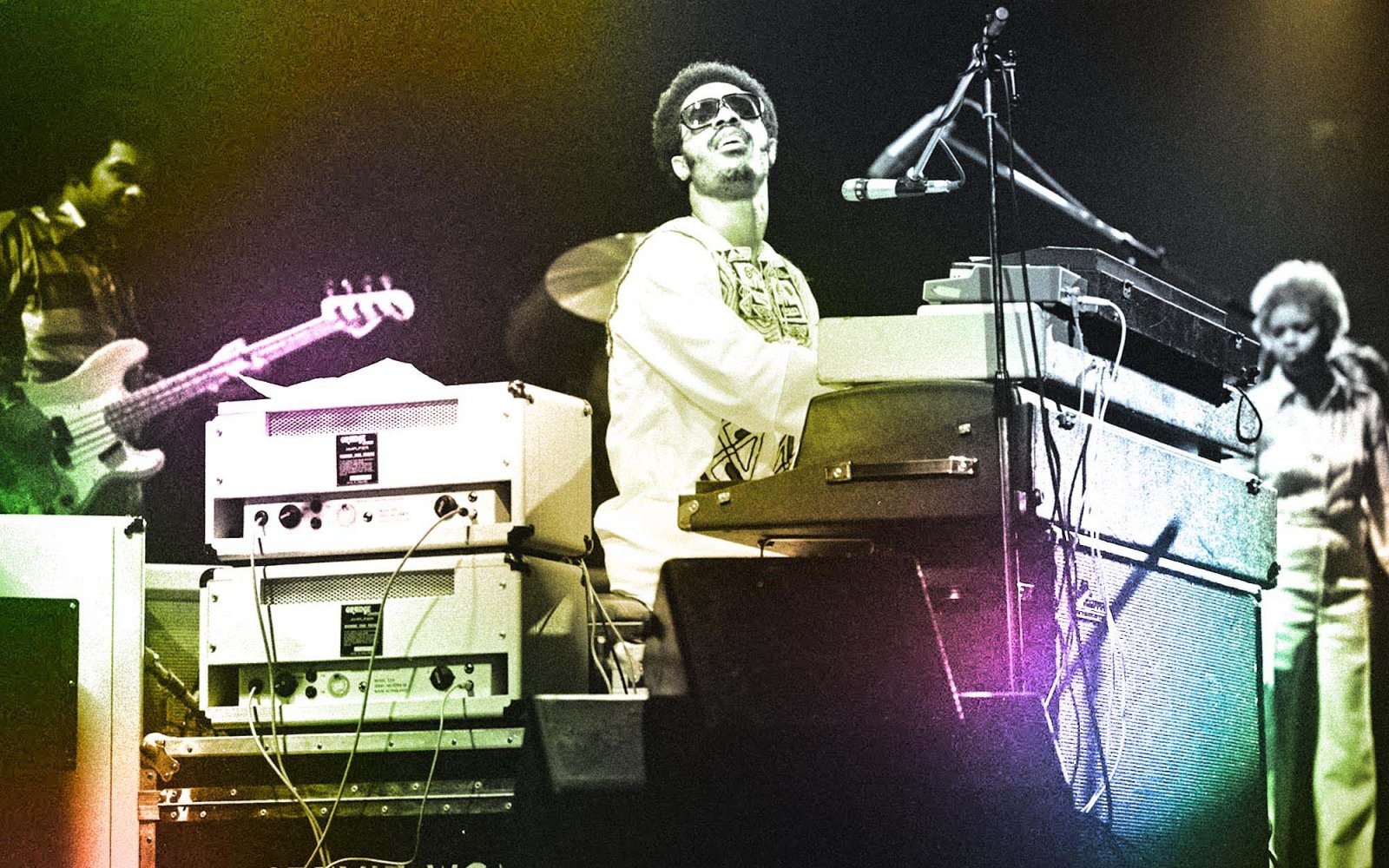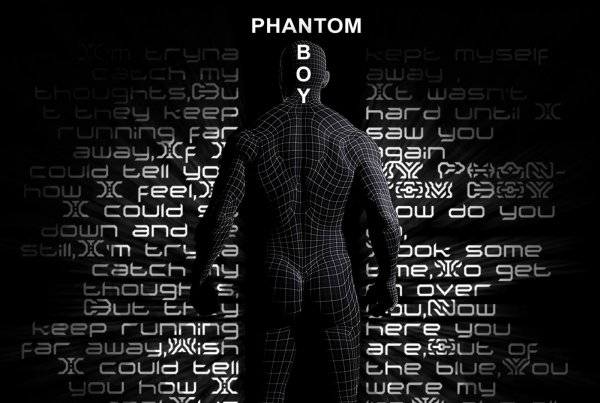Wonderland Avenue
In the career of Stevie Wonder, the five albums he made between 1972 and 76 are widely acknowledged as his artistic peak. ‘Music of My Mind’ came first, followed in quick succession by ‘Talking Book’ in the same year. ‘Innervisions’ dropped in 73, ‘Fulfillingness' First Finale’ in 74 - that’s four classic albums in two and half years - and ‘Songs in the Key of Life’ (a double album with a bonus four track single!) in 76. This period saw Stevie hungrily embracing the newly available synthesiser technology, indulging in an ongoing race with Herbie Hancock to get the latest synth with the very first model number. Together with his synth programmers / ‘Associate Producers’ / all-round-collaborators Robert Margouleff and Malcom Cecil, this period of frantic, often chaotic creativity produced an estimated 250 completed songs and fragments of many more.
A number of factors contributed to the impressive output. Stevie had negotiated a new contract with Motown, giving him more control over his artistic endeavours than any previous Motown act. Studio technology and in particular multi-tracking and Stevie’s favoured Moog and ARP synthesisers fundamentally changed both how an artist could work and what music actually sounded like. A general broadening of the soul/RnB/funk sonic palette was taking place and artists like Marvin Gaye, Donny Hathaway, Isaac Hayes, Curtis Mayfield and Sly Stone introduced jazz chords, different rhythms, longer arrangements and alternative lyrical themes, as they stretched out across their early 70s albums, re-imagining what RnB could be - and Stevie was very much a part of this pioneering spirit.
Music of My Mind in 1972 was a clear departure from Stevie’s previous work at Motown, into a fully realised and formidable original artist in complete control of his talent and who Motown would eventually come to rely on for financial security. Over the next few years, ably assisted by Margouleff and Cecil, he wrote, produced and played most of the instruments on a series of classic albums, introduced Latin, Jazz and ‘World Music’ elements to a pop audience, pioneered the use of synthesisers and produced one of the richest back catalogues in music.
Stevie then confounded both Motown and his audience by following up five of the greatest albums in the soul music genre, in any genre, with one of the oddest releases of his career, an inaccessible, mostly instrumental soundtrack to a documentary about plants, full of New Age chimes, bells and synths. In retrospect, ‘Journey Through The Secret Life Of Plants’ in 1979 seems to draw a line under the ‘classic’ part of his career, marking the move into his extensive soundtrack work of the 80s and 90s and, so the orthodox narrative goes, into a general slow decline in quality in his work.
However, the truth is more complicated than this - Stevie produced some astonishingly good music prior to the classic albums including some of the biggest hits of his career and at least a couple of songs that have quietly slipped into the popular song canon (‘If You Really Love Me’, ‘Signed, Sealed, Delivered’ et al). Equally, the post purple-patch albums contain many great tracks too. However, a thorough delve into Stevie’s post ‘golden period’ albums is needed to tease out the quality; for many fans, much of Stevie’s post-classic output was disappointing: saccharine-sweet, often missing much of the raw funk and soul which characterised his previous work and marred by clumsy synthetic rhythms - characterised by the MOR monster hits ‘I Just Called To Say I Love You’ and ‘Ebony and Ivory’. However, even under the brittlest and most unsympathetic 80s production, Stevie’s talent produced the occasional gem.
So here is a brief guide to some of Stevie Wonders’ songs and productions from outside the classic period of 1972 to 1976, taking in the entire arc of a career that now spans 5 decades.
‘How Can You Believe’
‘How Can You Believe’ is from Stevie’s 1968 instrumental easy listening set ‘Eivets Rednow’, on which he played harmonica, piano, clavinet and drums. It was the first of his albums to have (three) songs credited purely to him including this lovely harmonica melody over a neat cycle of major 7th and minor 7th chords. From the Rhodes intro to the sophisticated chord changes and orchestration, 'How Can...' gives a hint to the glories that were to come. The harmonica melody is particular enchanting, and were it to be replaced with a lyric, it could turn this into a sophisticated and beguiling song. As it is, it swoops through its chord changes, recalling ‘Let’s Go Away For A While’ from the Beach Boys’ ‘Pet Sounds’, and the bittersweet love-song-that-could-have-been is left to the imagination.
‘So What The Fuss’
A cracking return to form from 2005’s ‘A Time 2 Love’ album, featuring Prince on bluesy guitar licks and backing vocals from En Vogue, ‘So What the Fuss’ was centred round an obesely fat G-funk bass-line worthy of inclusion on any of the Stevie classic albums. The velcro-sticky hook ‘Shame On You’ ensured this was a massive radio hit in the US as well as picking up a Grammy nomination. ‘So What The Fuss’ was one of the occasions in his later career when Stevie successfully updated his music to sound completely contemporary whilst keeping hold of what was so powerful about his sound in the first place.
‘All I Do’
Originally co-written by Stevie in 1966, you can get a hint of how it was originally envisaged before it was updated for disco dance floors by listening to Tammi Terrell’s 1966 reverb-drenched version which remained in the Motown vaults until 2002. Stevie’s update keeps the evocative melody, and reframes it in a rock-solid rhythm section and precision production targeted directly at the dance floor.
Stevie’s back catalog has always been extremely popular with club DJs, indeed, UK trailblazing DJ Norman Jay MBE was often heard to say ‘When all else fails, play Stevie’. The ‘Hotter than July’ album was released in 1982 and the biggest track among the dance music fraternity was always the sublime ‘All I do’ with its warm bubble bath of Rhodes keys and rubbery synth b-line. The tight 4/4 beats and disco hi hats on the chorus make it perfect for DJs to drop in a house set, never failing to generate a roomful of arms in the air. ‘All I do’ also features a stellar lineup of backing vocals from Michael Jackson, Betty Wright and the O’Jays. Yes, those are Stevie’s backing vocalists.
’Edge of Eternity’
‘Edge of Eternity’, from 1995’s ‘Conversation Piece’ album recalls classic period Stevie - it’s a simple groove based track, layered with keys, clavinet, synths and jazzy horn lines - updated with a simple but effective sampled drum loop. Featuring a meandering tune
that builds perfectly from verse to chorus, it showcases Stevie’s ability to come up with a memorable melody over just two chords.
‘The Crown’ Gary Byrd and the GB Experience
Stevie co-wrote and produced ‘The Crown’ by radio DJ and occasional recording artist Gary Byrd in 1983. A sparkling production from Stevie, on which he also played piano, drums, Rhodes, synth, percussion and tambourine, it featured Byrd’s brilliant rapped tour of black history. It was only released on 12” and at just over ten minutes long, you really had to wait for the peak of this record, but when it came, at about 5:30 minutes in, it was worth it. Like Jack Nicholson stealing every scene in The Shining, Stevie delivers a jaw-dropping, goose-bump-inducing performance that completely steals the show. He sings a euphoric descending melody for just under a minute, and in that time squeezes in more passion and power than many artists manage in an entire career.
‘Sugar’
‘Sugar’ is a little known album track from 1970, that's 47(!) years later, and still sounds fresh and exciting. Stretching the Motown mould as far as he could, Stevie had taken over production duties by this time and was starting to shape the sound to his own design. The drums (played by Stevie of course) and percussion on ‘Sugar’ are pushed right up front in the mix to give them some real edge, while there has been some judicious EQ-ing on the other instruments to give the bass plenty of space to wander about in. The sparse, spindly guitar lines get way more mix attention than the horns which at times are buried to little more than a whisper, resulting in a jubilant but tough proto-funk workout, the energy levels of which are increased even further by Stevie’s impassioned vocal and the song modulating up after every chorus. ‘Sugar’ is the epitome of exuberant, unstoppable funky soul.
‘You Can’t Judge A Book By It’s Cover’
From the same album as ‘Sugar’, (‘Signed, Sealed, Delivered’) comes ‘You Can’t Judge A Book By It’s Cover’, a track that was ‘rediscovered’ during the mid to late eighties ‘Rare Groove’ scene in the UK and which gained in popularity when included on the 1988 ‘Motown Rare Grooves’ compilation. ‘You Can’t…’ fits into the category of the particular strand of of dark, dramatic, paranoid soul that Motown perfected in the late 60s - epitomised by Marvin’s ‘Grapevine’, much of the Temptations ‘psychedelic soul’ period material and of course ’Smiling Faces Sometimes’ from the Undisputed Truth. Again, the funky drums and congas are pushed to the front of the mix, and there are some early uber-funky clavinet licks too. Stevie’s production here is trailblazing, reflecting the increasing centrality given to the drums and bass that helped define funk music. Despite it being a 1970 Motown record, ’You Can’t…’ sounds like it could fitted perfectly into the Chairmen of the Board’s 1974 Funkadelic-fueled ‘Skin I’m In’ LP or one of the Isley Brothers mid 70s sets and still sound completely contemporary.
‘To Know You Is To Love You’ Syreeta & Stevie Wonder 1972
Later covered by BB King to great effect, this duet featured on Syreeta’s stunning Mowest debut and is covered in Stevie’s finger(tips)prints. Stevie produced the album with Cecil and Margouleff getting ‘Executive Producer’ credits; fun fact: Margouleff also shot the cover photo. Stevie also wrote or co-wrote seven of the nine tracks, played most of instruments and supplied some of the best backing vocals you’ll ever hear. His joyous ad-libs towards the end of Syreeta’s cover of his ‘I Love Every Little Thing About You’ are nearly worthy of their own song.
‘To Know You…’ however, is a different matter entirely. Stevie’s effected voice takes the first verse over a stark keys and conga groove, before Buzzy Felton’s guitar switches it up into the pre-chorus. Syreeta and the rest of the band come in as the chords resolve and the tune quickly builds to a string-laden epic in which she gives perhaps her most powerful vocal performance. The whole things ends up like a lost Rotary Connection song with what sounds like the Hi Records rhythm section and it even has a rocking extended guitar jam at the end, and a final 4 bar drum and congas coda!
‘Skeletons’
Forgive the slightly lumpen 80s drum track and ‘Skeletons’ from 1987 was one of Stevie’s strongest songs for years, an angry, cynical commentary on Reagan and the Iran/ Contra scandal, deftly constructed out of a series of vocal hooks. Full of superb classic-era synths and little touches of contemporary production, and the P-Funk-esque chorus also showed Stevie’s voice was still in rude health.
'Every Time I See You I Go Wild'
The B-side 1967’s ‘I’m Wondering’ non album single, ‘Every Time…’ is a feast of late 60s orchestrated Motown drama. There are many cases of the Motown quality control team making decisions about releases that in hindsight seem odd and this is defiantly one of them. Quite how the restrained pop-soul fluff of ‘I'm Wondering’ was chosen as the A-side over the tense, driving groove, fuzz guitar riff, killer mini-breakdown and epic chorus of ‘Every Time…’ remains a mystery.
Checkout the Wonderland Avenue playlist on Youtube here:
Harold Heath is a freelance writer who contributes to iDJ Magazine, Thump, Ministry of Sound, Traxsource etc. When not writing words about music, Harold is a DJ, producer and music tech teacher.




